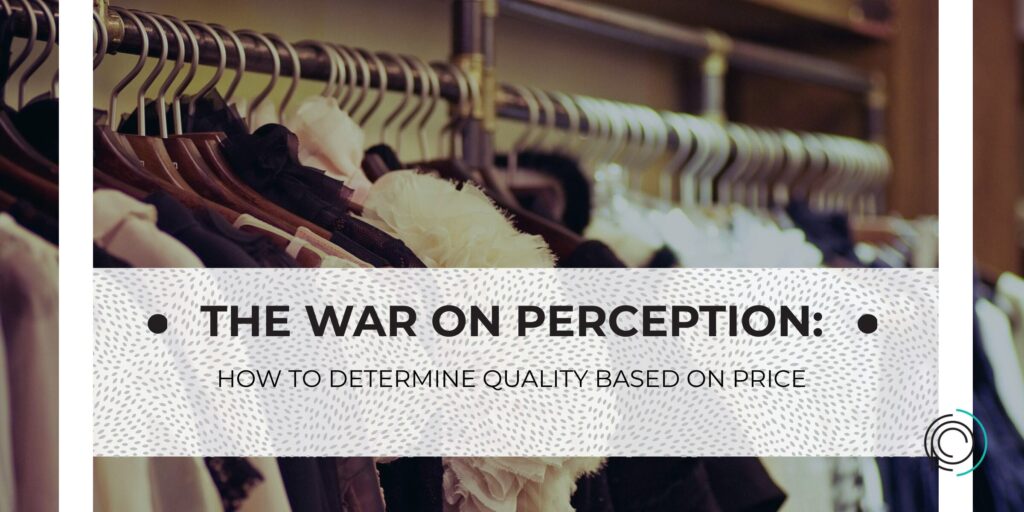The Price-Quality Paradox: Empowering Consumers to Make Informed Decisions
It is often said that you get what you pay for. Unfortunately, things are not always as straightforward as that. Some products may be overpriced for their actual worth, while some may be underpriced but of high quality. In today’s market, we are often bombarded with the mantra “cheap is bad, expensive is good,” making it difficult to determine what we should believe. Shoppers are left in a maze of marketing gimmicks and brand reputations, trying to decipher the true value of what they are buying.
Adding to the confusion, different industries have their own standards and practices that can further obscure the relationship between price and quality. For example, in the technology sector, innovation and brand prestige can significantly inflate prices, while in the fashion industry, the cost of a garment can be swayed by trends and designer labels. Moreover, in the automotive world, the perception of a car’s value can be influenced by factors like brand history, safety ratings, and even the country of manufacture.
However, it is pertinent to master the art of understanding how price and quality relate. This involves educating ourselves on the factors that influence pricing, such as production costs, materials used, and the level of craftsmanship. For instance, a piece of furniture might be pricier due to the use of sustainably sourced wood and expert craftsmanship, while a cheaper alternative might be made of particleboard with a veneer finish. By becoming informed consumers, we can better navigate the complex landscape of modern shopping and make more informed decisions.
Join me as we explore the war on perception, how to read between the lines, and how to make the best decisions. Together, we will delve into various strategies for evaluating products, dissect marketing tactics, and develop a keen sense of distinguishing between true value and mere price tags. We will also look into the psychological aspects of consumer behavior, understanding how emotions and cognitive biases can affect our purchasing choices. By the end of our journey, we aim to equip ourselves with the knowledge and tools necessary to become savvy shoppers who can make well-informed and satisfying purchases.
Price vs. Quality Perception
The perception of quality is usually linked to high prices. The thinking is that, if it’s expensive, it must be good. However, this mantra isn’t always true. The cost of production does not necessarily correspond to the quality of the product. Production costs could be high because of other factors such as advertising costs, brand loyalty costs, and other economic factors, without necessarily reflecting quality.
For instance, a luxury brand may invest heavily in advertising campaigns and celebrity endorsements, which drives up the price of its products. The brand benefits from the perceived prestige and exclusivity associated with high prices. These high costs are often passed down to consumers, leading them to equate a higher price tag with superior quality. Meanwhile, a lesser-known brand could offer items of similar or even superior quality at a fraction of the cost because it spends less on marketing and relies more on word-of-mouth promotion. These brands might invest more in the actual development and craftsmanship of their products rather than in grand marketing schemes.
Additionally, the materials used and the manufacturing process play significant roles in determining the quality of a product. For example, a luxury handbag might be crafted from premium leather and hand-stitched by skilled artisans, justifying a higher price to some extent. However, there are also instances where products are marked up simply because of the brand name, not necessarily the materials or craftsmanship involved.
Therefore, consumers should be cautious and consider other factors such as product reviews, materials used, and overall craftsmanship rather than relying solely on price as an indicator of quality. Reading reviews from other buyers can provide insights into the actual performance and durability of a product. Examining the materials and understanding the manufacturing process can also help in making an informed decision. Ultimately, a high price does not always guarantee high quality, and a lower price does not necessarily mean lower quality. By looking beyond the price tag, consumers can find high-quality products that offer true value for their money.
Low Price Does Not Always Mean Low Quality
On the flip side, don’t let the low price tag fool you as there may be higher quality products that are inexpensive. It may be possible for some manufacturers to keep their costs low, giving them the opportunity to offer affordable products of the same quality as their competition. This can be achieved through various means, such as utilizing more efficient production techniques, sourcing materials at lower costs, or even benefiting from economies of scale.
Many online businesses are competing with traditionally functioning brands. These companies are able to offer lower prices because they don’t need to pay for expensive real estate or flashy advertisements, yet provide top-quality goods. Additionally, online businesses often have streamlined operations and reduced overhead costs, allowing them to pass on the savings to the consumer without compromising the quality of the products they offer. This competitive edge allows them to attract a broader customer base, proving that low price does not necessarily equate to low quality.
Quality Markers Beyond Price
While there may not be an exact formula for determining the quality of a product by price, there are some other markers that can be considered. One of those markers is the country of origin. For instance, products that are manufactured in the same country as their raw materials often indicate that manufacturers are not cutting corners by trying to source their materials from elsewhere to lower the cost of production. This not only supports local economies but can also mean better oversight and control over the manufacturing process. When manufacturers source raw materials locally, it often results in a more seamless integration between the supply chain and the production line, potentially leading to higher-quality products.
Additionally, reviews from other buyers can provide insights that the price tags cannot. A product with positive reviews indicates that it is of high quality, irrespective of its price. Reviews often include details about the durability, functionality, and overall satisfaction of the product, giving potential buyers a more comprehensive understanding of what to expect. Furthermore, reviews can highlight common issues or standout features that may not be evident from the product description alone. For example, user testimonials might reveal how a product performs under specific conditions or over a prolonged period, adding another layer of reliability to your purchasing decision.
Another marker to consider is the brand’s reputation. Well-established brands that have been in the market for a long time often maintain a standard of quality to preserve their reputation and customer loyalty. They are likely to invest in better materials, skilled labor, and rigorous quality control processes. Established brands usually have a track record that can be researched, providing potential buyers with historical data on product performance and customer satisfaction. Moreover, such brands often have more robust customer service departments, which can be an invaluable resource in case any issues arise with the product.
Furthermore, the warranty or guarantee offered with the product can be a good indicator of quality. Manufacturers who are confident in the longevity and performance of their products are more likely to offer generous warranties. This adds an extra layer of consumer protection and peace of mind. A comprehensive warranty can also serve as an assurance that the manufacturer will stand behind their product, making it easier for consumers to trust the purchase. In some cases, extended warranties or service plans are available, which can cover repairs and maintenance for an extended period, further enhancing the product’s value.
While the price can provide some indication of quality, it is by no means the sole factor to consider. Looking at the country of origin, customer reviews, brand reputation, and warranty offerings can give a more accurate picture of the product’s true quality. Taking all these factors into account can help consumers make more informed decisions, ensuring that they invest in products that meet their expectations for durability, functionality, and overall satisfaction. Understanding these additional markers not only leads to better purchasing decisions but also contributes to a more satisfying consumer experience.
Invest In Quality
Investing in quality products is a wise decision that will save you money and a lot of hassle in the long run. While it might be tempting to opt for cheaper, inferior products, they often need to be replaced more frequently, which ends up costing you more money and time. Additionally, these lower-quality items can cause frustration and inconvenience when they fail to meet expectations, often at the most inconvenient times.
It’s important to consider purchasing products that are specifically suited to your needs. This means taking the time to research and perhaps invest more initially. High-quality products generally perform better and last longer, providing greater satisfaction and efficiency. Even if it means spending more upfront, if the product aligns well with your requirements, it will likely prove to be a worthwhile investment over time.
Moreover, quality products often come with better warranties, customer support, and after-sales service, which can be invaluable when something goes wrong. Reputable brands are more likely to stand by their products, offering repair services or replacements that inferior products simply can’t match. This adds an additional layer of security and peace of mind that extends beyond the initial purchase.
In essence, prioritizing quality over quantity not only enhances your day-to-day experience but also contributes to long-term savings and peace of mind. By choosing quality, you are investing in reliability, efficiency, and overall satisfaction. While the initial cost might be higher, the long-term benefits far outweigh the short-term savings of cheaper alternatives. So, the next time you’re faced with a purchasing decision, remember that quality truly pays off in the long run.
You shouldn’t be fooled by a high price tag or misjudging a product that is sold at a price that seems too good to be true. It’s crucial to look beyond the cost and investigate other quality markers such as the country of origin, the materials used in production, and reviews from other buyers. By doing so, you can read between the lines and make better purchasing decisions that align with your needs and budget. Additionally, online businesses often offer high-quality products at competitive prices, which means you don’t have to break the bank to find something durable and well-made.
Investing a bit more upfront for quality could save you money down the road, as quality products often last longer and save buyers from the headache of frequent replacements. It’s also worth considering the long-term satisfaction and performance of the item, which can bring peace of mind. So, the next time you’re evaluating whether a product is worth its price tag, remember that prices can be deceptive. Instead, use a combination of cost, quality markers, and detailed research to ensure you’re making the best decision for you. This approach allows you to strike a balance between affordability and quality, ultimately leading to wiser, more satisfying purchases.
If you are ready to improve your internal operations and reduce operating costs, contact one of our consultants today to get started.







